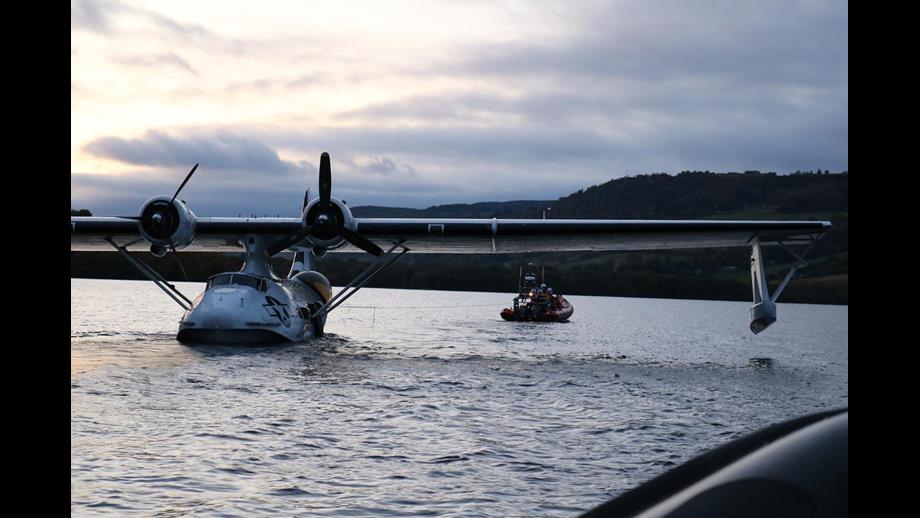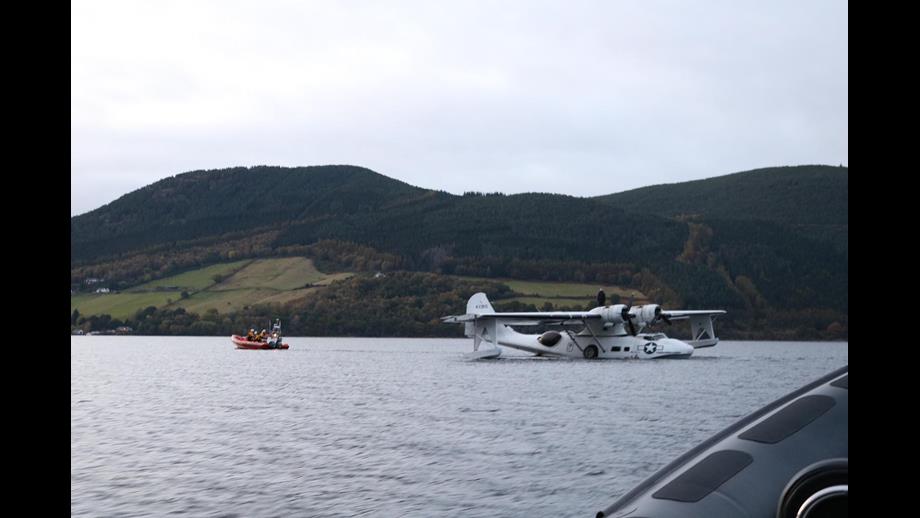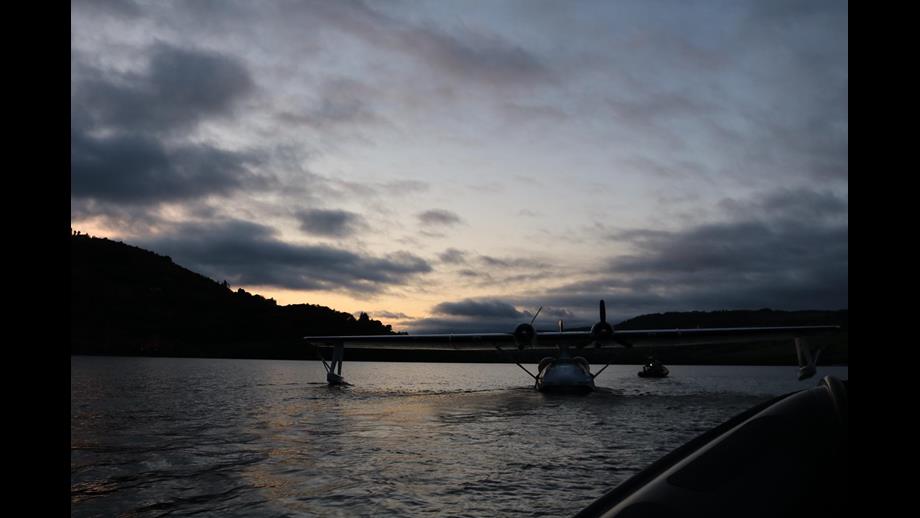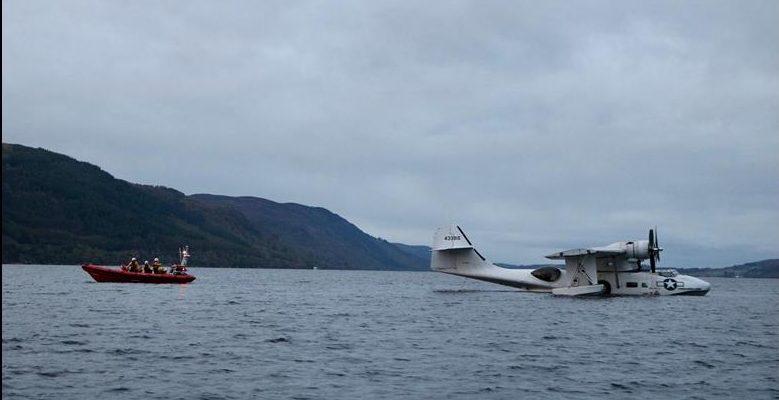The crews attached to the RNLI Station at Loch Ness are no strangers to call-outs for strange objects, but none were as odd as the call they received on Sunday 18th October 2020. They received a call to please rescue a seaplane, and it was not a hoax.
At 17:50, the pilot aboard the WWII era PBY Catalina ‘Miss Pick Up’ called the lifeboat station on Loch Ness for assistance as their engines had failed during take-off, so the take-off was aborted, leaving the seaplane stranded in the middle of the Loch.

The lifeboat crew launched their boat and quickly reached the plane but deciding how to rescue the unwieldy object proved to be rather challenging. The aircraft was powerless and drifting in the middle of the loch, so the two crews agreed that the safest thing would be to attach a towline and pull the seaplane to a secure location, deemed to be Urquhart Bay, which was close by.
The lifeboat crew carefully maneuvered in behind the plane to connect a tow line to a point on the aircraft’s rear. This was tricky as the tail of the plane was barely higher than the bow of the rescue boat, so some careful piloting was called for before the line could be attached.
With its wingspan of 32 meters, the seaplane was a cumbersome tow and was far too wide to tow to any of the harbors or pontoons available on the loch, so it was pulled into the safety of the bay and tied up to a mooring buoy.
The tow had to be undertaken at a very low speed, and darkness comes early at this time of year in Scotland, so searchlights had to be employed to allow the lifeboat crew to keep the mooring buoy close to Borlum Pier in sight.
When the aircraft was safely moored to the buoy, the four-person crew disembarked into the lifeboat and were delivered safe and sound to their colleagues in the harbor, and the lifeboat crew returned to their station.

On the RNLI website, David Ferguson, one of the members of the lifeboat crew, spoke of the difficulties they experienced while attaching the line and towing the aircraft. He said, “Towing the Catalina would prove to be no easy feat. Fixing points are few and far between on such an aircraft, and the best option was underneath the tail, which barely cleared the bow of the lifeboat. Nevertheless, with some care, we managed to establish a towline.”

Who are the RNLI?
Founded in 1824, the RNLI exists to save lives on the water. It is staffed by volunteers who provide a 24X7 search and rescue service in the waters in and around the United Kingdom and the Republic of Ireland. There are 238 lifeboat stations dotted around the United Kingdom and Ireland and over 240 lifeguard units protecting bathers on beaches. For more information on the RNLI, you can visit their web site.
Another Article From Us: New Documentary Reveals Story of Last German Soldiers to Surrender
The RNLI depends entirely on donations to keep operating, and all the crews, both on land and sea, are volunteers. In the almost 200 years of its existence, the RNLI has saved 142,700 lives.
